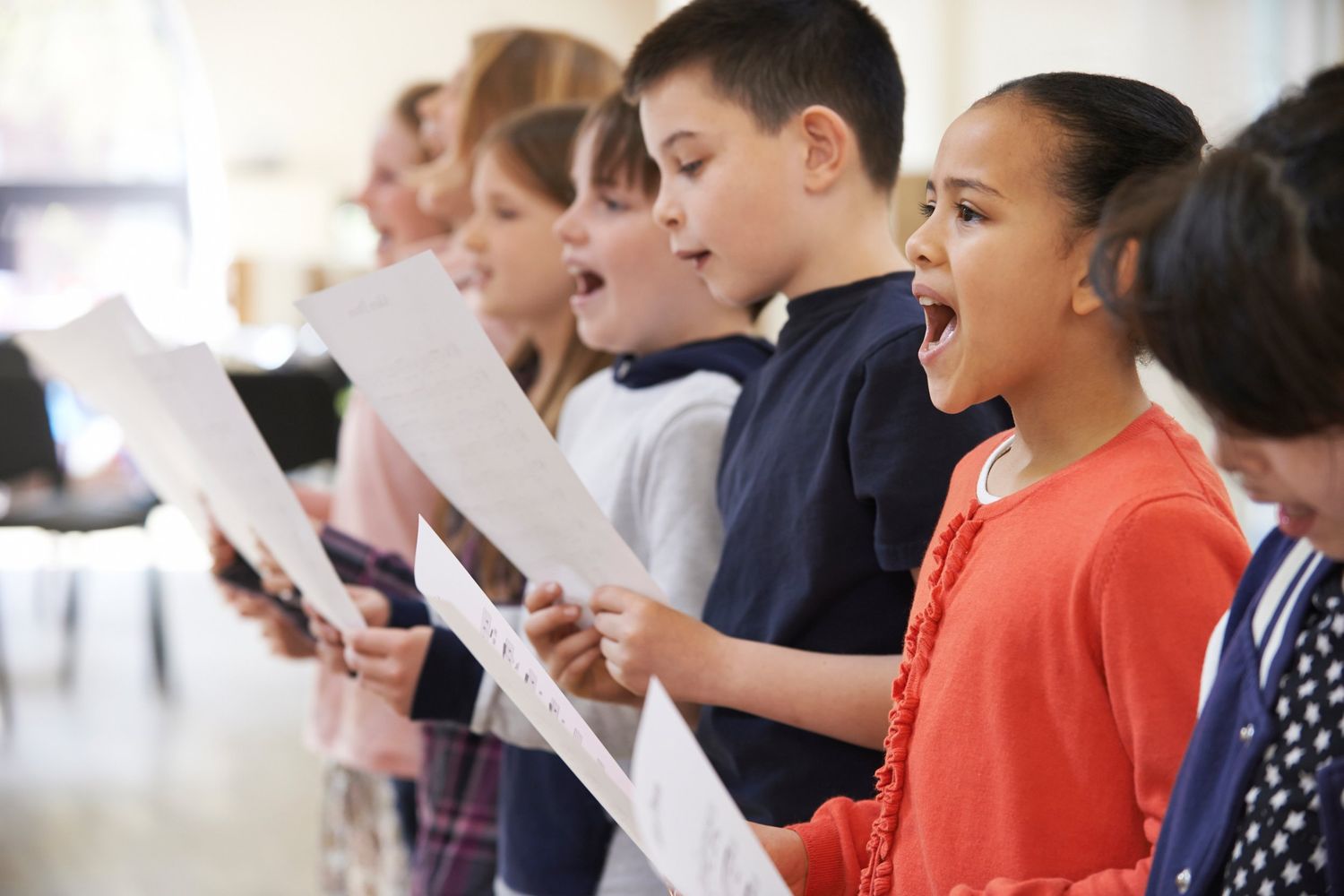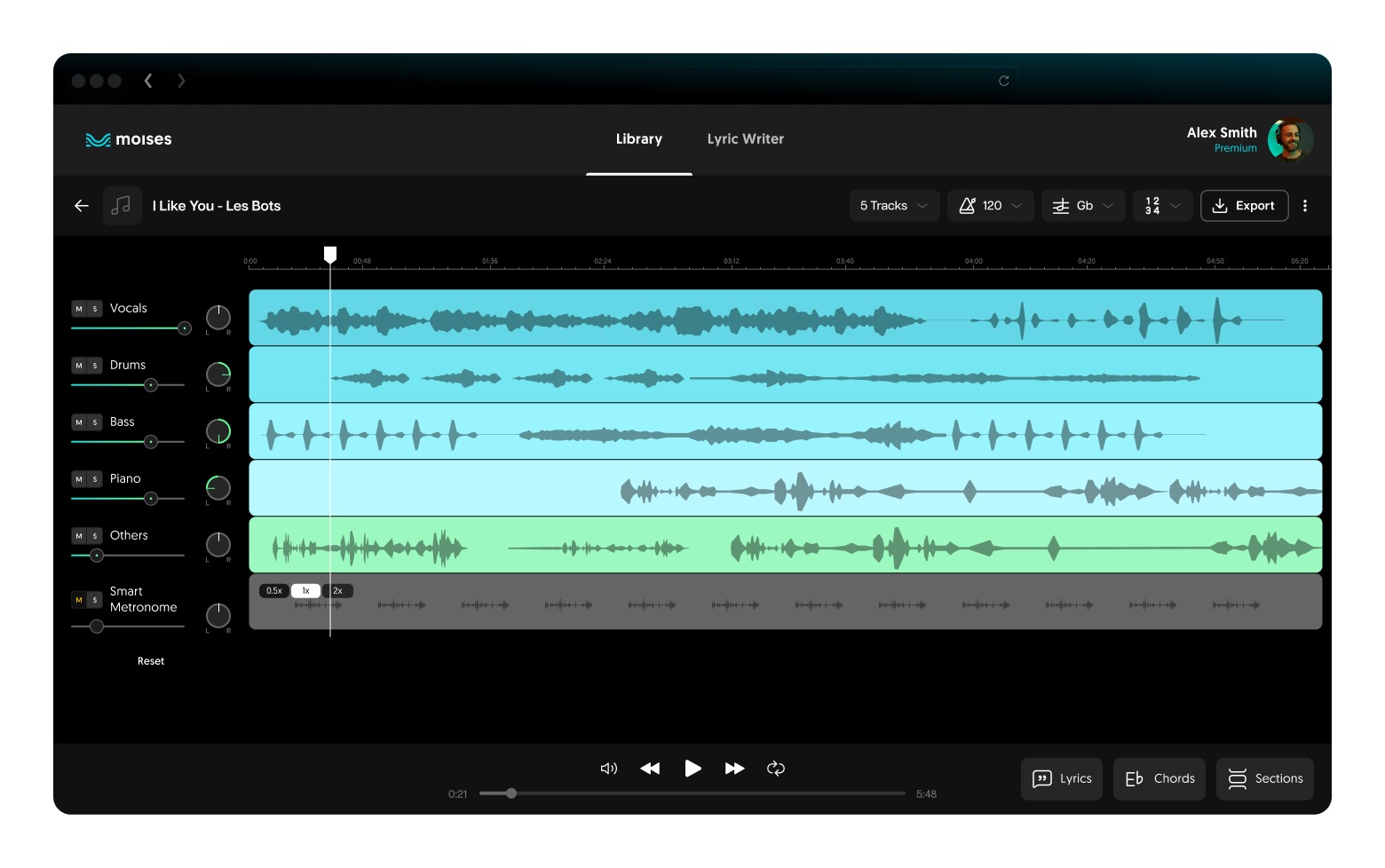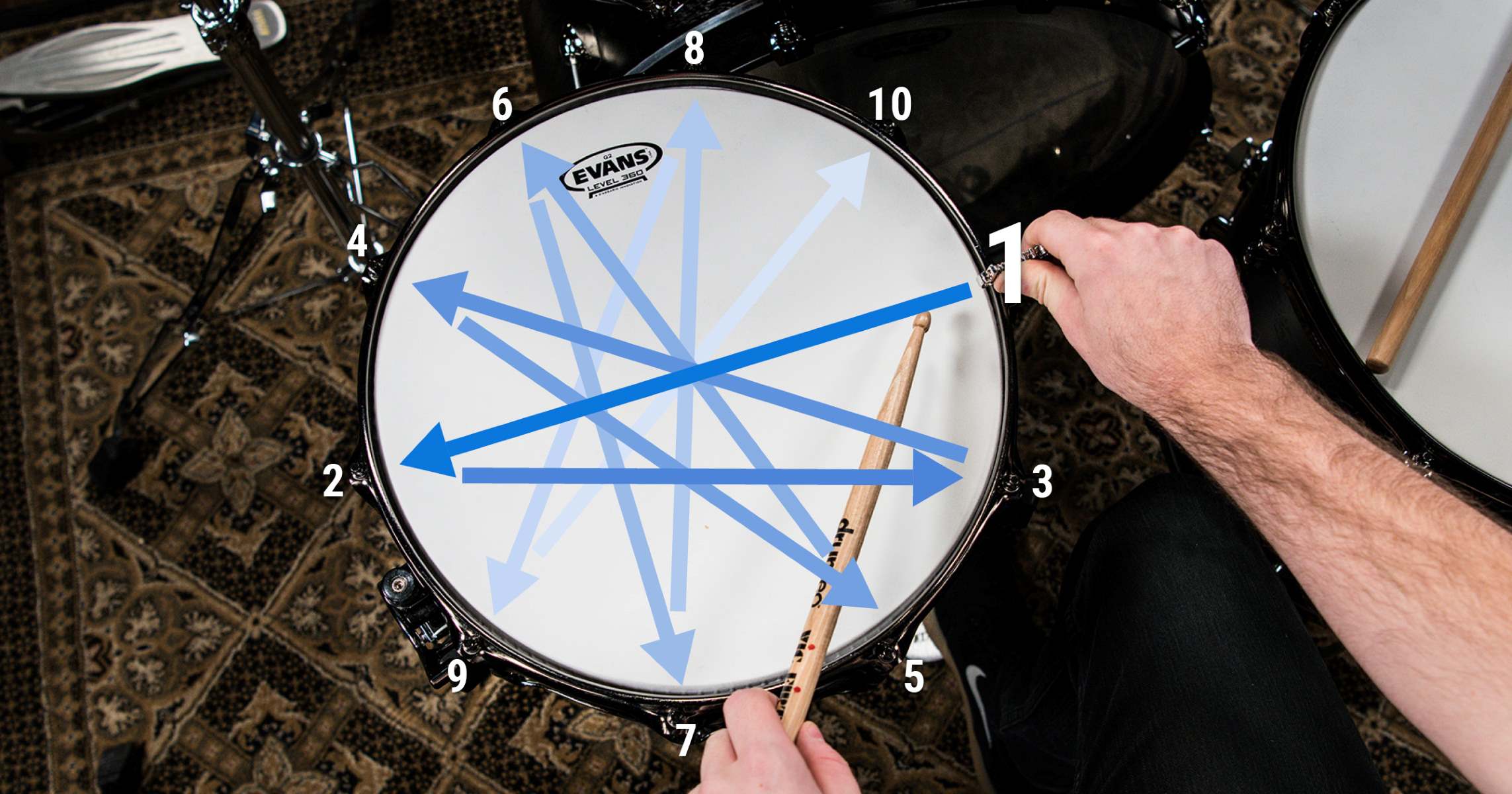Home>Events & Info>Acapella>How To Teach Young Children Acapella Songs


Acapella
How To Teach Young Children Acapella Songs
Modified: January 22, 2024
Learn how to effectively teach young children acapella songs, fostering their passion for music and enhancing their vocal skills. Discover expert tips and techniques for engaging and inspiring young voices.
(Many of the links in this article redirect to a specific reviewed product. Your purchase of these products through affiliate links helps to generate commission for AudioLover.com, at no extra cost. Learn more)
Table of Contents
- Introduction
- Benefits of Teaching Young Children Acapella Songs
- Selecting Age-Appropriate Acapella Songs
- Warm-Up Exercises for Young Children
- Teaching Basic Vocal Techniques
- Developing Listening Skills in Young Children
- Teaching Acapella Songs with Actions
- Rehearsing and Practicing Acapella Songs
- Tips for Engaging Young Children in Acapella Singing
- Creating Performance Opportunities for Young Children
- Conclusion
Introduction
Welcome to the exciting world of acapella singing for young children! Acapella, derived from the Italian phrase “a cappella,” meaning “in the style of the chapel,” refers to vocal music performed without instrumental accompaniment. This unique form of singing showcases the beauty and purity of the human voice, allowing young children to explore their musical abilities and express themselves creatively.
Teaching young children acapella songs not only introduces them to the joy of singing but also enhances their cognitive, emotional, and social development. Through acapella singing, children develop a strong ear for music, improve their listening skills, enhance their concentration, and boost their self-confidence. Additionally, acapella singing encourages teamwork and collaboration, as children learn to blend their voices harmoniously with others.
In this article, we will delve into the wonderful world of teaching acapella songs to young children. We will explore the benefits of acapella singing, provide tips for selecting age-appropriate songs, share warm-up exercises to prepare young voices, teach fundamental vocal techniques, highlight the importance of developing listening skills, discuss incorporating actions into acapella songs, offer strategies for rehearsal and practice, and provide ideas for creating performance opportunities.
Whether you’re a parent, teacher, or music educator, this article will serve as a comprehensive guide to help you introduce young children to the magic of acapella singing. So, let’s dive in and discover the incredible journey of teaching acapella songs to our youngest singers!
Benefits of Teaching Young Children Acapella Songs
Teaching young children acapella songs offers a range of benefits that contribute to their overall development. Let’s explore some of the key advantages:
- Musicality and Ear Training: Acapella singing helps young children develop a keen sense of musicality. By singing without instrumental accompaniment, they learn to listen carefully to their own voices and to others around them. This improves their ability to stay in tune and harmonize with others, fostering their ear training skills.
- Cognitive Development: Singing acapella songs requires children to memorize melodies, lyrics, and harmonies. This exercise enhances their memory skills and strengthens their cognitive abilities. It also helps improve their concentration and attention span as they focus on coordinating their voices with others.
- Emotional Expression: Acapella singing allows children to express their emotions through the power of their voices. They can convey joy, sadness, excitement, and various other feelings through the dynamics, phrasing, and vocal expression in their singing. This promotes emotional expression and creativity.
- Self-Confidence and Self-Esteem: As children learn to sing acapella songs, they gain confidence in their abilities. Performing without instrumental support encourages them to rely on their own voices and develop a strong sense of self. This boosts their self-esteem and nurtures a positive self-image.
- Language and Pronunciation: Singing acapella songs provides an excellent opportunity for children to improve their language skills and pronunciation. They learn new vocabulary, practice articulation, and develop clarity in their speech as they sing the lyrics of the songs.
- Social Skills: Acapella singing promotes teamwork and cooperation. By singing in a group, children learn to listen to others, blend their voices harmoniously, and synchronize their timing and phrasing. They develop essential social skills such as communication, collaboration, and mutual respect.
With these incredible benefits, teaching young children acapella songs becomes a valuable experience that not only nurtures their passion for music but also contributes to their holistic development. So, let’s continue our journey and learn how to select the perfect acapella songs for young voices!
Selecting Age-Appropriate Acapella Songs
Choosing age-appropriate acapella songs is crucial when teaching young children. The right selection ensures that the songs are accessible, engaging, and suitable for their cognitive and vocal capabilities. Here are some tips for selecting the perfect songs:
- Song Length: Consider the attention span of young children and choose songs that are short and concise. Opt for songs with simple structures and repetitive patterns to make it easier for them to learn and remember.
- Melody and Range: Select songs with melodic lines that are within the vocal range of young children. Avoid songs with too many large intervals or vocal leaps, as they may be challenging for their developing voices.
- Lyrics and Content: Pay attention to the lyrics and ensure they are age-appropriate in terms of content. Choose songs with lyrics that are easy to understand and relate to for young children. Look for themes that resonate with their experiences, such as friendship, imagination, or nature.
- Rhythm and Tempo: Opt for songs with clear and steady rhythms. The tempo should be moderate to allow children to sing comfortably and maintain a steady pace. Avoid songs with complex syncopations or rapid tempos that may be too challenging for them to follow.
- Action Songs: Consider incorporating action songs into your repertoire. These songs have accompanying movements or gestures, which make them more interactive and engaging for young children. The actions can enhance their understanding of the song and provide a multisensory experience.
- Familiar Songs: Choose songs that young children are familiar with, such as nursery rhymes or popular children’s songs. Familiarity with the melody and lyrics will make it easier for them to learn and sing along.
- Relevance and Cultural Diversity: Include songs from different cultures and traditions to expose children to a diverse range of music. Introducing them to songs from various backgrounds promotes cultural awareness and appreciation.
By considering these factors and tailoring your song selection to the age and abilities of young children, you can create a repertoire of acapella songs that will captivate their interest and facilitate their musical development. Now that we have a better understanding of selecting age-appropriate songs, let’s move on to warm-up exercises to prepare their young voices!
Warm-Up Exercises for Young Children
Before diving into singing acapella songs, it’s essential to warm up young children’s voices and prepare them for vocalizing. Warm-up exercises not only help prevent vocal strain but also improve flexibility, range, and overall vocal quality. Here are some fun and effective warm-up exercises for young children:
- Yawning and Stretching: Start by having children take a deep breath and exaggerate a big yawn. Encourage them to stretch their arms up high and then slowly lower them while releasing the breath. This exercise helps relax their vocal muscles and encourages proper breath support.
- Humming Bee: Have children gently hum like a buzzing bee while focusing on the vibrations in their lips and face. This exercise warms up the vocal cords and resonating chambers, preparing them for singing.
- Lip Trills: Instruct children to gently blow through their lips, creating a vibrating sound. This exercise helps loosen tension in the lips and mouth, promoting a relaxed and open vocal production.
- Tongue Twisters: Engage children in reciting tongue twisters that emphasize different articulation patterns. This helps improve clarity and dexterity in their speech, which translates to better vocal articulation during singing.
- Five-Note Scale: Guide children in vocalizing a simple five-note scale (do-re-mi-fa-sol). Start at a comfortable pitch and gradually explore the range upwards and downwards. This exercise helps develop their vocal range and control.
- Echo Exercises: Sing short melodic phrases and have children echo them back. Vary the pitch and rhythm, encouraging them to match your tone and timing. This exercise develops listening skills, pitch accuracy, and vocal imitation.
- Breathing Exercises: Teach children diaphragmatic breathing by having them place a hand on their belly. Instruct them to take deep breaths, feeling their belly rise and fall with each inhalation and exhalation. This promotes proper breath support and control during singing.
- Animal Sounds: Incorporate animal sounds into warm-up exercises to make them more engaging and fun. Encourage children to imitate the sounds of various animals, such as cats, dogs, birds, and cows. This helps children explore different vocal tones and textures.
Remember to keep the warm-up exercises age-appropriate and enjoyable for the children. Keep the duration short and vary the exercises to maintain their interest. Once their voices are warmed up and ready, it’s time to dive into teaching them the fundamental vocal techniques for acapella singing!
Teaching Basic Vocal Techniques
When teaching young children acapella songs, it’s important to focus on developing their basic vocal techniques. By providing them with a strong foundation, they will be able to sing with confidence, clarity, and control. Here are some essential vocal techniques to teach young children:
- Posture and Breath Support: Teach children to stand tall with their feet shoulder-width apart and their shoulders relaxed. Encourage them to take deep breaths, filling their lungs completely, and engaging their diaphragm for breath support.
- Vocal Warm-ups: Before each singing session, lead children through a series of vocal warm-up exercises, such as lip trills, humming, and gentle sirens. This helps to relax their vocal muscles and prepares their voices for singing.
- Pitch Accuracy: Help children develop their pitch accuracy by encouraging them to sing along with a keyboard, piano, or pitch reference. Start by using simple songs with a limited range and gradually progress to more challenging melodies.
- Articulation and Diction: Emphasize clear articulation and diction by practicing consonant sounds and crisp vowel pronunciation. Guide children to enunciate each word distinctly, ensuring that the lyrics are easily understood.
- Dynamic Control: Teach children to sing with varying dynamics, from soft to loud, to add expression to their singing. Explore different levels of volume, emphasizing the importance of maintaining a balanced and controlled sound.
- Phrasing and Musicality: Guide children to understand the phrasing of a song by recognizing natural breath pauses. Help them shape the melody by emphasizing the rise and fall of musical lines, adding expression and musicality to their singing.
- Harmonization: Introduce basic harmonization concepts by encouraging children to sing simple harmonies or echo parts. This helps them develop an ear for harmony and enhances their ability to sing in a group setting.
- Vocal Health: Educate children about the importance of taking care of their voices. Teach them to stay hydrated, avoid straining their voices, and rest when needed. Emphasize the significance of vocal warm-ups and proper vocal hygiene.
When teaching these vocal techniques, it’s crucial to be patient, encouraging, and provide positive reinforcement. Celebrate their progress and accomplishments along the way, inspiring them to continue developing their vocal skills. With a solid understanding of vocal techniques, children will be well-prepared to tackle acapella songs with confidence and joy.
Developing Listening Skills in Young Children
Listening skills are essential for singing acapella songs effectively. They allow young children to tune their ears to melody, harmony, rhythm, and dynamics, enabling them to sing in tune and blend harmoniously with others. Here are some strategies to develop listening skills in young children:
- Active Listening: Encourage children to actively listen to music by paying attention to different musical elements. Prompt them to identify the melody, rhythm patterns, and instrument sounds in recordings or live performances.
- Singing in Unison: Begin with allowing children to sing acapella songs in unison. This helps them focus on listening to the collective sound and adjusting their voices to match the group, fostering a sense of unity.
- Call and Response: Engage children in call and response activities, where they take turns singing short phrases or musical patterns. This trains their listening skills as they need to listen carefully to imitate and respond accurately.
- Emphasizing Dynamics: Incorporate songs with dynamic contrasts and discuss how the volume changes affect the overall sound. Guide children to actively listen for and imitate the changes in dynamics, ranging from soft to loud and vice versa.
- Exploring Different Genres: Expose children to a variety of music genres and styles. This helps broaden their musical vocabulary and exposes them to different rhythms, melodies, and harmonies, enhancing their listening comprehension.
- Music Appreciation: Foster music appreciation by discussing various musical elements and their impact on the overall song. Analyze the lyrics, instrumentation, and emotional expression, encouraging children to critically listen and interpret the music.
- Listening Activities: Engage children in fun listening activities, such as identifying instruments in a song, recognizing familiar melodies, or guessing the next musical phrase. These activities promote active listening and develop their auditory discrimination skills.
- Group Singing: Encourage children to sing together in a group, emphasizing the importance of listening to one another. Guide them to blend their voices, match their dynamics and timing, and adjust their pitch to complement the group sound.
By incorporating these strategies and activities into your teaching approach, you can help young children develop strong listening skills. As their listening abilities improve, they will become more proficient in singing acapella songs and engaging in harmonious ensemble performances.
Teaching Acapella Songs with Actions
Adding actions to acapella songs not only makes them more engaging and interactive but also helps young children better understand the lyrics and enhance their overall performance. Here are some tips for incorporating actions into your acapella song teaching:
- Visualize the Lyrics: Help children visualize the lyrics by incorporating actions that represent the meaning of the words. For example, if the song mentions birds flying, encourage children to flap their arms like wings.
- Use Gestures: Introduce simple gestures that correspond to specific phrases or rhythmic patterns in the song. For instance, children can clap their hands, sway their bodies, or tap their knees in time with the music.
- Teach Sign Language: Incorporate sign language into the actions of the song. Teach children simple signs that represent keywords or concepts in the lyrics. This helps reinforce the meaning of the words and can be a valuable learning tool for children.
- Create Choreography: Develop simple choreography for certain sections of the song, especially during the chorus or key moments. This can include movements like stepping, turning, or hand gestures. Practice the choreography along with the vocal performance to ensure coordination.
- Group Formation and Movements: Arrange children into groups and assign different movements or actions to each group. This creates a dynamic visual element during the performance and encourages teamwork and synchronization.
- Incorporate Multi-Sensory Elements: Combine actions with other sensory experiences, such as using scarves or ribbons to enhance the visual effect, or incorporating simple props that align with the song’s theme.
- Encourage Creative Input: Allow children to contribute their own ideas for actions, gestures, or movements that they feel reflect the song. This promotes their creativity and ownership of the performance.
- Reinforce Rehearsal: Practice the actions alongside the vocal rehearsals to ensure that children become familiar and comfortable with the movements. Regularly revisit and reinforce the actions throughout the rehearsal process.
By teaching acapella songs with actions, you create a more immersive and enjoyable experience for young children. Actions not only enhance the overall performance but also facilitate better understanding of the lyrics and musical elements. So, let the creativity flow and have fun exploring the combination of singing and movement!
Rehearsing and Practicing Acapella Songs
Rehearsing and practicing acapella songs is vital to ensure a polished and cohesive performance. Here are some tips to make the rehearsal process effective and enjoyable for young children:
- Break it Down: Divide the song into manageable sections and work on them one at a time. Start with the chorus or the easiest parts, then gradually move on to the verses and more challenging sections.
- Repeat and Reinforce: Repetition is key to learning. Be patient and allow time for children to practice each section multiple times until they feel comfortable. Reinforce good singing habits, such as proper breathing, posture, and diction, during rehearsals.
- Focus on Blend: Pay attention to the blend and balance of voices when singing in a group. Encourage children to listen to one another and adjust their dynamics, timing, and pitch to create a unified sound. Use vocal warm-ups and exercises to reinforce blend and harmony.
- Use Recordings: Record the acapella songs during rehearsals and listen back together. This helps children identify areas that need improvement and develop their critical listening skills. It also allows them to hear the progress they have made.
- Provide Individual Support: Offer individual guidance and support to children who may need extra help with specific parts or techniques. Work with them separately, providing additional practice or focusing on specific vocal skills they need to develop.
- Encourage Peer Feedback: Foster a supportive environment where children can give and receive constructive feedback from their peers. This promotes collaboration, communication, and a sense of shared responsibility for creating a cohesive performance.
- Add Artistic Interpretation: Involve children in discussions about artistic interpretation, dynamics, phrasing, and emotional expression. Encourage them to express their ideas and contribute to the overall artistic vision of the song.
- Add Performance Elements: Introduce performance elements, such as choreography, stage presence, and facial expressions, to enhance the visual aspect of the acapella performance. Practice these elements alongside the vocal rehearsals to ensure coordination.
Remember, the rehearsals should be structured and focused, but also fun and engaging for young children. Create a positive and encouraging atmosphere to build their confidence and excitement for the final performance. With dedication, practice, and a well-executed rehearsal plan, children will be ready to proudly showcase their acapella singing abilities!
Tips for Engaging Young Children in Acapella Singing
Engaging young children in acapella singing can be a delightful and rewarding experience. Here are some tips to make their acapella journey engaging and enjoyable:
- Choose Fun and Familiar Songs: Select songs that resonate with young children, such as nursery rhymes, popular children’s songs, or songs from their favorite movies or TV shows. Familiarity with the songs will make them more excited to sing and participate.
- Add Actions and Movements: Incorporate actions and movements into the songs to make them more interactive and engaging. Encourage children to perform simple gestures, dance, or even use simple props to enhance the performance.
- Make it a Game: Turn singing into a game by introducing elements of competition or challenges. For example, divide children into teams and see who can sing a certain phrase or hit a specific note the best.
- Use Visual Aids: Utilize visual aids, such as colorful posters, flashcards, or pictures related to the songs. This helps children connect the visuals with the music and aids in their understanding and engagement.
- Add Storytelling or Role-Playing: Incorporate storytelling or role-playing into the acapella songs. Create a narrative or assign different characters to children, allowing them to act out the story through their singing.
- Encourage Creativity: Provide opportunities for children to add their own ideas or improvise during the singing. This allows them to express their creativity and gives them a sense of ownership over the songs they are performing.
- Explore Instruments: Introduce basic rhythm instruments that children can play along with the acapella songs. This adds a tactile element to the music-making experience and allows them to actively participate in creating the rhythm and beat.
- Celebrate Achievements: Recognize and celebrate each child’s progress and achievements. Applaud their efforts, provide positive feedback, and create opportunities for them to showcase their talents and growth.
- Create Performance Opportunities: Organize informal performances for children to share their acapella singing with friends, family, and other audiences. This boosts their confidence and motivation, making the learning process more meaningful.
- Keep Sessions Interactive and Short: Maintain a balance between singing and other interactive activities to keep young children engaged. Keep the sessions short, considering their attention span and energy levels.
By implementing these tips, you can create a lively and engaging acapella singing experience for young children. Remember to foster a supportive and encouraging atmosphere that allows children to explore their vocal abilities, build their confidence, and develop a love for singing!
Creating Performance Opportunities for Young Children
Providing performance opportunities for young children is a wonderful way to showcase their acapella singing skills and celebrate their achievements. Performances not only allow children to share their musical talents with others but also foster their self-confidence, promote teamwork, and enhance their overall development. Here are some tips for creating performance opportunities for young children:
- Informal Gatherings: Organize informal gatherings, such as family sing-alongs, playdates, or community events, where children can confidently perform acapella songs. These relaxed settings provide a supportive environment and allow children to share their love for singing with friends, family, and neighbors.
- Classroom Showcases: Arrange classroom showcases or mini-concerts where children can perform for their peers and parents. This provides a platform for children to proudly present their acapella songs and gain applause and recognition.
- Collaborative Performances: Collaborate with other classrooms, schools, or local music groups to organize joint performances. This allows children to experience performing alongside their peers from different backgrounds, fostering a sense of camaraderie and teamwork.
- Community Events: Participate in local community events, such as fairs, festivals, or charity fundraisers, where children can showcase their acapella singing talents. These events provide a wider audience and expose children to a diverse range of performances and traditions.
- School Assemblies: Arrange for children to perform acapella songs during school assemblies or special events. This allows them to showcase their musical abilities to a larger audience and promotes school spirit and pride.
- Musical Productions: Collaborate with other educators or music organizations to stage small musical productions that involve acapella singing. This provides children with a more immersive performance experience and develops their stage presence and confidence.
- Virtual Performances: Explore the option of virtual performances where children can record their acapella songs and share them online with family and friends. This allows for global reach and engagement, regardless of geographical limitations.
- End-of-Year Concerts: Plan end-of-year concerts or recitals where children can showcase their acapella songs to a larger audience. This allows them to reflect on their progress and celebrate the culmination of their hard work.
- Appreciation Events: Organize special appreciation events, like a music appreciation night, where young children can perform acapella songs for teachers, parents, and other important figures in their lives. This provides a meaningful way to express gratitude and showcases their musical growth.
- Recordings and Digital Platforms: Create recordings of children’s acapella performances and share them on digital platforms. This allows children to reach a wider audience and provides them with a tangible and lasting musical memory.
Remember to create a supportive and celebratory atmosphere during performances. Applaud their efforts, acknowledge their progress, and encourage them to continue exploring their musical talents. These performance opportunities not only enable children to shine but also inspire a lifelong love for acapella singing.
Conclusion
Teaching young children acapella songs is an enriching and rewarding experience that cultivates their love for music, nurtures their vocal abilities, and enhances their overall development. By exploring the benefits of acapella singing, selecting age-appropriate songs, incorporating warm-up exercises, teaching vocal techniques, developing listening skills, adding actions, and practicing acapella songs, we can create a thriving musical environment for young children.
Through acapella singing, children develop their musicality, cognitive skills, emotional expression, self-confidence, language abilities, and social skills. By engaging them in interactive and enjoyable singing experiences, we can foster their creativity, refine their listening skills, and encourage their active participation in the world of music.
Remember to create performances opportunities for young children, whether they are informal gatherings, classroom showcases, collaborative performances, or special events. These platforms allow children to share their acapella singing talents, gain confidence, and celebrate their achievements. Additionally, consider the use of virtual platforms and recordings to expand their reach and showcase their performances worldwide.
As we guide young children through their acapella journey, it is important to provide a supportive and encouraging environment. Celebrate their progress, emphasize the joy of singing, and allow their creativity to flourish. With patience, practice, and a passion for nurturing young voices, we can inspire a lifelong love for acapella singing in our youngest singers.
So, let’s embark on this musical adventure together, empowering young children to express themselves through the beauty of acapella singing. Let their voices soar, harmonize, and fill the world with the magic of their melodies. Happy singing!











